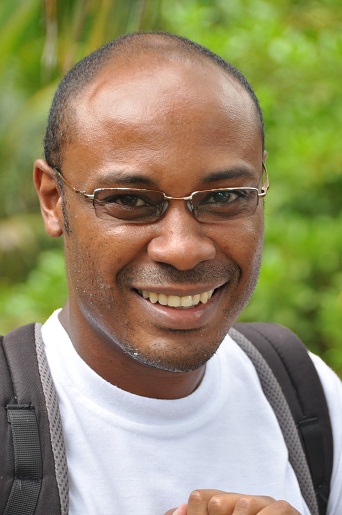Bouzour! (Hello!) I’m James Mougal from the Seychelles archipelago, a group of 115 islands off the east coast of Africa, above Madagascar. I work for the Seychelles National Park Authority, a semi-autonomous body responsible for the management of national terrestrial and marine parks and act as an advisory to the Ministry of Environment and Energy on protected area issues.
I am a research officer and my responsibilities are as wide as practical implementation of research and habitat restoration projects to policy development and law enforcement. I’m one of the five Seychellois working on four different EDGE species or group. My project will focus on the Sooglossidae, an endemic frog family with 4 known species (Seychelles Frog- Sooglossus sechellensis, Thomasset’s Frog- Sooglossus thomasseti, Gardiner’s Frog- Sechellophryne gardineri and Palm Frog- Sechellophryne pipilodryas) and another one still to be described. I intend to review and update the distribution map of all the sooglossid frogs which are presently found mainly on Mahé and Silhouette Islands. I will assess their relative abundance in the most degraded forest habitat type (Intermediate Forest) and explore their habitat preference.
In addition, within my two year-EDGE fellowship, I will like to produce a field monitoring protocol for early detection of threat such as the chytrid disease and evaluating long-term threat like climate change. The results, outputs and outcomes of my project will contribute towards a lager project ‘A cutting-EDGE approach to saving Seychelles’ evolutionarily distinct biodiversity’ (link to the Darwin project document).
The EDGE training course has been a great introduction to my two-year EDGE fellowship and the EDGE programme. It has really prepared me for the task ahead, successful implementation of my project at all levels; project planning and management, field research methods and data analysis (stats!) and how to incorporate social science and CEPA into my project’s outputs (very different from what was initially planned). During the course I was constantly reviewing my project proposal and incorporating new ideas. Simultaneously, I was assessing the feasibility of all my project’s activities which includes improving my study design, modifying my survey methods and setting some clear indicators. Overall, it has been an enriching experience and made me appreciate project planning even more.
